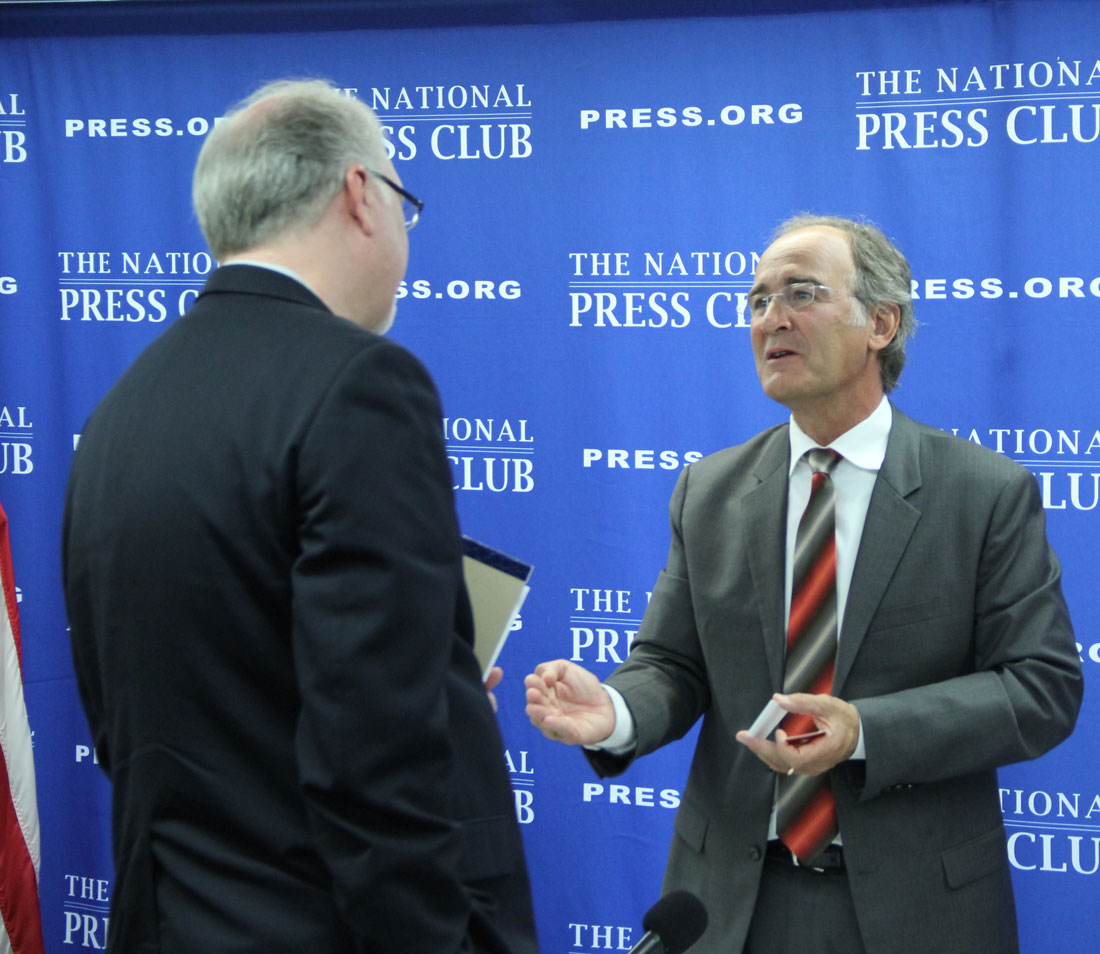WASHINGTON — Nearly 3,000 roadway deaths could be prevented worldwide every day if humans could be removed from the driving equation. Nobody’s talking about taking people out of their cars, but rather, taking them out of the driver’s seat.
Every year, more than 1.2 million people die around the world in roadway accidents, according to the Association for Safe International Road Travel. Ninety percent of those accidents, 1.08 million or 2,958 a day, are attributable to human error, through speeding, driving under the influence, or other dangerous maneuvers.
“If we can [solve] this one day sooner, we can save 3,000 lives,” says Larry Burns, the former vice president for research and development at General Motors and an expert in the field of autonomous electric vehicles cars.
Automotive giant GM has been working on computer-driven vehicles for the past decade, he says. More recently, Tesla and Uber have invested billions into advancing driverless technology. Google has been at the forefront of the movement, testing driverless cars on public roads since 2012. These Google cars, says Mr. Burns, could be ready as early as 2018.
Burns discussed the impact of autonomous vehicles on American business and energy security during a panel talk last week with the vice president of communications at Domino’s Pizza, Lynn Liddle, and Robbie Diamond, the president and CEO of Securing America’s Future Energy (SAFE).
Increased safety is not the only benefit that electric driverless cars can offer. Burns says that autonomous vehicles could save Americans anywhere from $2 trillion to $4 trillion a year, both in money and in time saved.

According to Larry Burns’ research, driverless vehicles could lower consumer costs by 75 percent or more (Larry Burns)
On top of being almost completely electrical, the cars’ autonomy would allow passengers to focus on other things outside of driving. An executive could review his notes for a meeting, for example, or a mom could be feeding the child sitting next to her. Distracted driving – texting or talking on a cell phone – could in theory become a thing of the past.
For Mr. Diamond, the importance of autonomous electric cars is linked to safeguarding the country’s energy security – and national security.
“We are dependent on one fuel source for the entire transportation sector,” Diamond says. Even as domestic oil production increases, he says, Americans should reduce their reliance on oil across the board.
Diamond also says the driverless car industry “needs to be a faster tortoise or a more focused hare” to make these vehicles widely available as soon as possible.
As for Domino’s Pizza, the country’s largest pizza restaurateur, having a fleet of autonomous vehicles would greatly reduce operating costs for franchises delivering hundreds of pizzas every day.
“Ten million miles per week are covered by Domino’s delivery drivers,” Ms. Liddle says during the panel at the National Press Club. According to her, most of the company’s delivery drivers use their own cars, gas, and insurance. Franchise owners reimburse them for on-the-job use of their own vehicles. Trimming back could increase profitability for franchises, even if it pushes out drivers.
Despite the safety and economic benefits, there are still concerns about the use of this technology on public roads. One of the big issues is liability.
Current safety laws place accident responsibility on the vehicle’s operator. When a motorist rear-ends another vehicle on the highway, that motorist is usually responsible for the damages. No laws exist to determine who is responsible when a car that no one is driving runs into another vehicle.
“Liability is a significant issue in that there’s never been a robot car at fault. The rules of the road may have to be rewritten,” Jamie Court, president of Consumer Watchdog, says in a phone interview after the event. “How can we be [personally responsible] when we aren’t in control?”
After Google released information detailing how its driverless cars were involved in 11 accidents since the start of the road tests three years ago, concerns about liability in a driverless future have grown. Ten accidents took place when the driverless vehicle was hit by another human-driven car. The other accident happened when a driver operating the computer-driven car rear-ended a second vehicle.
“Robots, by engineer standards, are never wrong … and that’s a very serious issue,” Mr. Court says.
According to Burns, the former GM executive who is also a consultant on Google’s driverless car project, the problem with liability is figuring out ways for human-controlled and autonomous vehicles to coexist on public roads.
The number of driverless electric vehicles is “not going to go from zero to 1 billion overnight,” he says. “The technology is really, really close,” says Burns, “but we still need to teach cars how humans drive.”


